American anti-aircraft and anti-missile systems of the Nike family
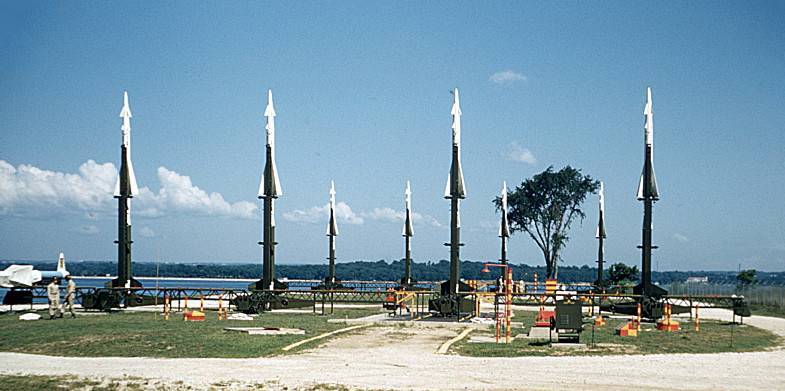
During the Second World War, work was carried out in Germany, Great Britain and the USA on the creation of anti-aircraft guided missiles. But for various reasons, none of the prototypes created was ever adopted. In 1945, at a stationary position, around dozens of major cities and important defense and industrial centers in the United States, several dozen batteries of 90- and 120-mm anti-aircraft guns were equipped with radar fire control. However, in the first post-war years, approximately 50% of the available anti-aircraft artillery was sent to warehouses. Large-caliber anti-aircraft guns were preserved mainly on the coast, in the areas of large ports and naval bases. However, the Air Force also affected reductions, a significant part of the fighters built with piston engines built during the war were scrapped or handed over to the Allies. This was due to the fact that in the USSR until the mid-1950s there were no bombers capable of performing a combat mission on the continental part of North America and returning back. However, after the end of the American monopoly on the atomic bomb in 1949, it was impossible to exclude the possibility that in the event of a conflict between the US and the USSR, Soviet Tu-4 piston bombers would fly in one direction.
Anti-aircraft missile system MIM-3 Nike Ajax
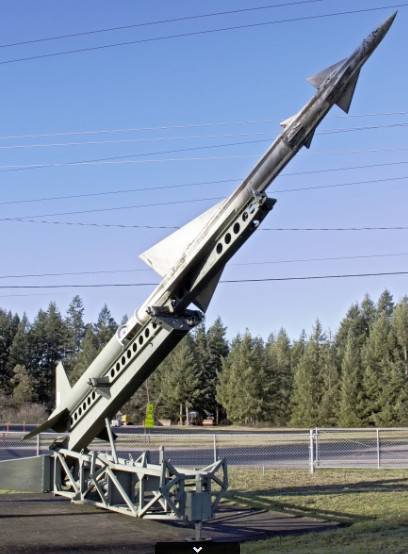
Even before the start of mass production in the USSR of long-range bombers capable of reaching the continental United States, Western Electric specialists in 1946 began to create the SAM-A-7 anti-aircraft missile system, designed to combat air targets flying at high and medium altitudes.
The first firing tests of engines took place in 1946. But a significant number of technical problems significantly delayed development. A lot of difficulties arose with ensuring the reliable operation of the second-stage liquid engine and testing the launch accelerator, which consisted of 8 small solid-fuel jet engines arranged in a cluster pattern, with a ring around the central body of the rocket. In 1948, it was possible to bring the marching rocket engine to an acceptable level, and for the first stage they created a monoblock solid fuel booster.
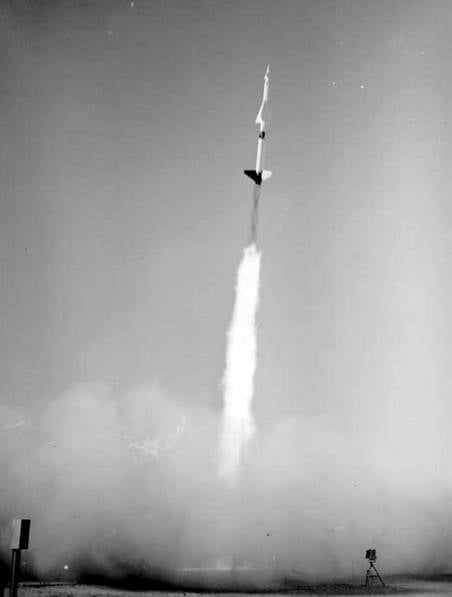
Guided anti-aircraft missile launches began in 1950, and in 1951, during the control firing at the firing range, the B-17 radio-controlled bomber was shot down. In 1953, after control tests, the complex, which received the designation MIM-3 Nike Ajax, was adopted. Serial construction of air defense system elements began in 1951, and the erection of ground positions in 1952 - that is, even before the official adoption of the MIM-3 Nike Ajax into service. In Russian-language sources, the name “Nike-Ajax” is accepted for this complex, although in the original version it sounds like “Nike-Ajax”. The MIM-3 Nike-Ajax complex was the first mass-produced air defense system to be adopted and the first anti-aircraft missile system deployed by the US Army.
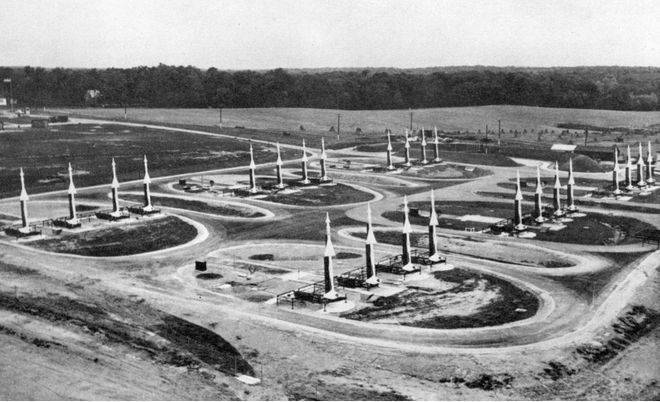
The MIM-3 Nike Ajax complex used an anti-aircraft missile, the main engine of which was powered by liquid fuel and an oxidizer. The launch was carried out using a detachable solid fuel accelerator. Guidance on the target is a radio command. The data supplied by target tracking radars and tracking the missiles about the target’s position in the air and missiles, were processed by a counting and solving device built on electrovacuum devices. The device calculated the calculated point of the meeting of the rocket and the target, and automatically corrected the rate of missiles. The missile warhead was undermined by a radio signal from the ground at the calculated point of the trajectory. For a successful attack, the rocket usually rose above the target, and then fell to the calculated interception point. A unique feature of the Nike Ajax anti-aircraft missile was the presence of three high-explosive fragmentation warheads. The first, weighing 5,44 kg, was located in the nasal section, the second - 81,2 kg - in the middle, and the third - 55,3 kg - in the tail. It was assumed that this will increase the likelihood of hitting a target due to a longer cloud of fragments.
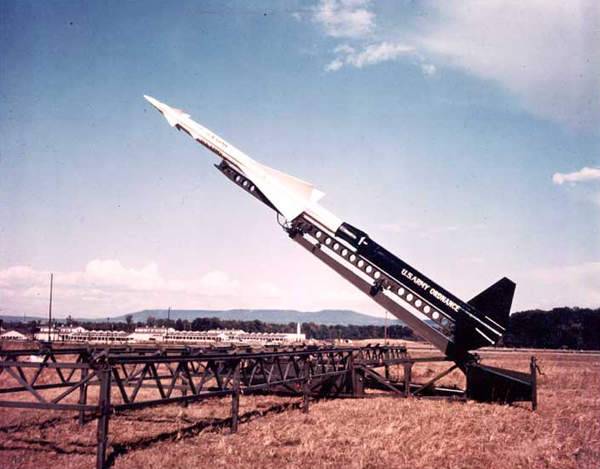
The curb weight of the rocket reached 1120 kg. Length - 9,96 m. Maximum diameter - 410 mm. The inclined range of the Nike Ajax is up to 48 kilometers. A rocket accelerating to 750 m / s could hit a target at a height of just over 21000 meters.
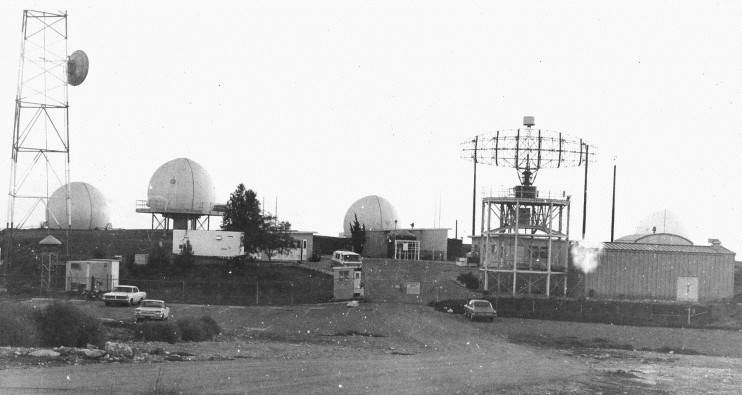
Each Nike-Ajax battery consisted of two parts: a central control point, where personnel bunkers were located, detection and guidance radars, counting and resolving equipment, and a technical launch position, which housed launchers, missile depots, fuel tanks, and oxidizing agent. At a technical position, as a rule, there were 2-3 missile storages and 4-6 launchers. Near major cities, naval bases and strategic airfields aviation sometimes positions from 16 to 24 launchers were built.
The test of the Soviet atomic bomb in August 1949 made a great impression on the American military-political leadership. At a time when the United States lost its monopoly on nuclear weapon, the Nike-Ajax anti-aircraft missile system, together with the interceptor fighter jets, was supposed to ensure the invulnerability of North America from Soviet strategic bombers. The fear of the atomic bombing caused huge funds to be allocated for large-scale construction of air defense systems around important administrative and industrial centers and transport hubs. Between 1953 and 1958, about 100 MIM-3 Nike-Ajax anti-aircraft batteries were deployed.
At the first stage of deployment, Nike Ajax positions were not reinforced in engineering terms. Subsequently, with the emergence of the need to protect complexes from the damaging factors of a nuclear explosion, underground storage facilities for missiles were developed. In each buried bunker, up to 12 missiles were stored, fed horizontally through a drop-down roof with hydraulic actuators. A rocket raised to the surface on a rail car was transported to the launcher. After loading the missile launcher was installed at an angle of 85 degrees.
At the time of adopting the MIM-3 SAM, Nike-Ajax could successfully deal with all the long-range bombers that existed at that time. But in the second half of the 1950s, the likelihood of Soviet long-range bombers reaching the continental United States increased significantly. At the beginning of 1955, M-4 bombers (chief designer V.M. Myasishchev) began to arrive at the combat units of Long-Range Aviation, followed by the improved 3M and Tu-95 (OKB A.N. Tupolev). These machines could already be guaranteed to reach the North American continent and, after delivering nuclear strikes, return back. Considering that cruise missiles with nuclear warheads were created for long-range aircraft in the USSR, the characteristics of the Nike-Ajax complex no longer seemed sufficient. In addition, during operation, refueling and servicing missiles with an engine running on explosive and toxic fuel and a caustic oxidizer caused great difficulties. The incident that occurred on May 22, 1958 at a position in the vicinity of Middleton, New Jersey became very famous. On this day, as a result of a rocket explosion caused by an oxidizer leak, 10 people died.
The positions of the MIM-3 Nike-Ajax air defense systems were very bulky; the complex used elements whose relocation was very complex, which in fact made it stationary. During training firing, it turned out that coordinating the actions of batteries is difficult. There was a fairly high probability that one target would be simultaneously fired by several batteries, while the other target entering the affected area could be ignored. In the second half of the 1950s, this flaw was corrected, and all command posts of anti-aircraft missile systems were connected to the SAGE system (English Semi Automatic Ground Environment), which was originally created for the automated guidance of fighter-interceptors. 374 radar stations and 14 regional air defense command centers throughout the continental United States were linked to this system.
However, improving team management did not solve another important problem. After a series of serious incidents related to fuel and oxidizer leaks, the military demanded the speedy development and adoption of air defense systems with solid-fuel missiles. In 1955, fire tests took place, according to the results of which it was decided to develop SAM-A-25 SAM, which subsequently received the name MIM-14 Nike-Hercules. The pace of work on the new complex accelerated after intelligence reported to the US leadership about the possible creation in the USSR of supersonic long-range bombers and cruise missiles with intercontinental range. The US military, acting in advance, wanted to get a missile with a large range and a large ceiling. At the same time, the rocket was supposed to fully use the existing infrastructure of the Nike-Ajax system.
In 1958, mass production of the MIM-14 Nike-Hercules began, and it quickly replaced the MIM-3 Nike-Ajax. The last complex of this type was dismantled in the USA in 1964. Some of the US anti-aircraft systems removed from service were not disposed of, but transferred to NATO allies: Greece, Italy, Holland, Germany and Turkey. In some countries, they were used until the early 1970s.
Anti-aircraft missile system MIM-14 Nike-Hercules
The creation of a solid fuel rocket for the MIM-14 Nike-Hercules air defense system was a great success for Western Electric. In the second half of the 1950s, American chemists were able to create a solid fuel formulation suitable for use in long-range anti-aircraft missiles. At that time, this was a very great achievement, in the USSR it was possible to repeat this only in the second half of the 1970s in the S-300P anti-aircraft missile system.
Compared to the MIM-3 Nike-Ajax anti-aircraft missile complex MIM-14 Nike-Hercules has become much larger and heavier. The mass of a fully equipped rocket was 4860 kg, length - 12 m. The maximum diameter of the first stage is 800 mm, the second stage is 530 mm. The wingspan was 2,3 m. The air target was defeated by a high-explosive fragmentation warhead weighing 502 kg and equipped with 270 kg of explosive HBX-6 (an alloy of TNT and RDX with aluminum powder).
The starting accelerator, which separates after fuel production, is a bunch of four Ajax M5E1 solid fuel engines, which is connected to the march stage by a cone. In the tail of the bunch of accelerators there is a clamp to which four stabilizers of a large area are attached. All aerodynamic surfaces are in coincident planes. In a few seconds, the accelerator accelerates SAM to a speed of 700 m / s. The main engine of the rocket was fueled by a mixture of ammonium perchlorate and polysulfide rubber with aluminum powder. The combustion chamber of the engine is located near the center of gravity of the SAM and is connected to the output nozzle by a pipe around which the onboard equipment of the rocket is mounted. The main engine starts automatically after separation of the starting accelerator. The maximum speed of the rocket was 1150 m / s.
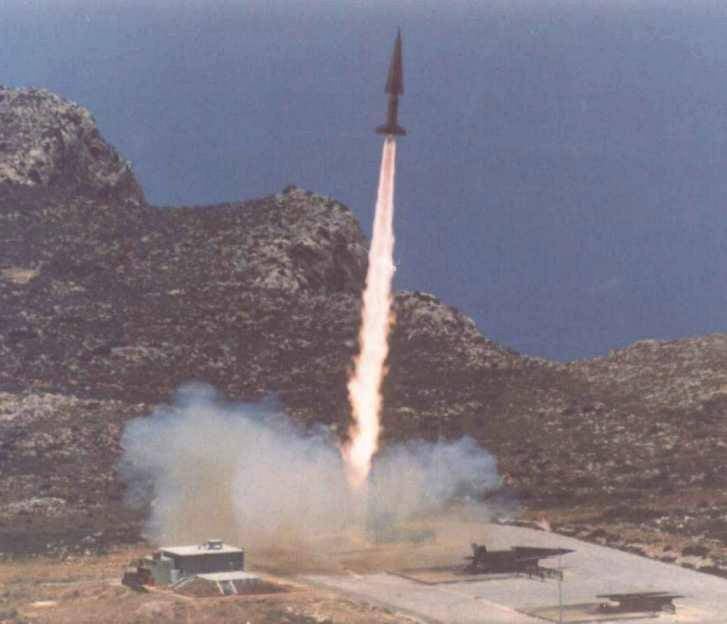
Compared to Nike-Ajax, the new anti-aircraft complex had a much greater range of destruction of air targets (130 instead of 48 km) and height (30 instead of 21 km), which was achieved through the use of a new, larger and heavier SAM and powerful radar stations. The minimum range and altitude of hitting a target flying at a speed of up to 800 m / s are 13 and 1,5 km, respectively.
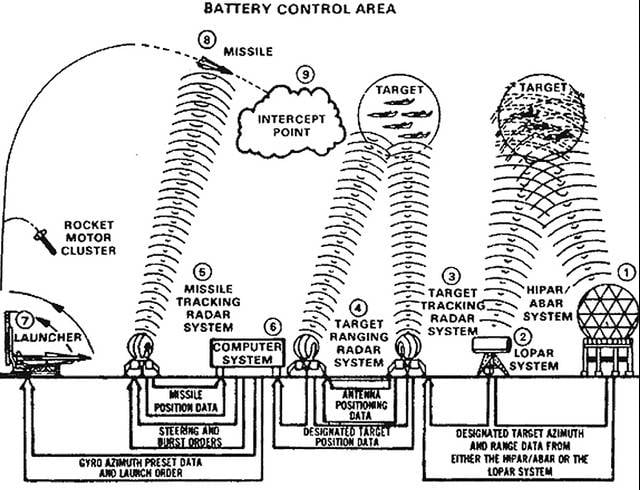
The schematic diagram of the construction and combat operation of the complex remained the same. Unlike the first Soviet stationary S-25 air defense system, used in the Moscow air defense system, the American Nike-Ajax and Nike-Hercules air defense systems were single-channel, which significantly limited their capabilities in repulsing a massive raid. At the same time, the S-75 single-channel Soviet air defense system had the ability to change positions, which increased survival. But it was possible to surpass the Nike-Hercules in range only in the actually stationary S-200 air defense system with a "liquid" missile. Before the MIM-104 Patriot appeared in the United States, the MIM-14 Nike-Hercules anti-aircraft systems were the most advanced and efficient of the available in the West. The firing range of the latest Nike Hercules variants was brought up to 150 km, which is a very good indicator for a solid fuel rocket created in the 1960s. At the same time, firing at long distances could be effective only when using a nuclear warhead, since the radio command guidance scheme gave a large error. Also, the capabilities of the complex to defeat low-flying targets were insufficient.
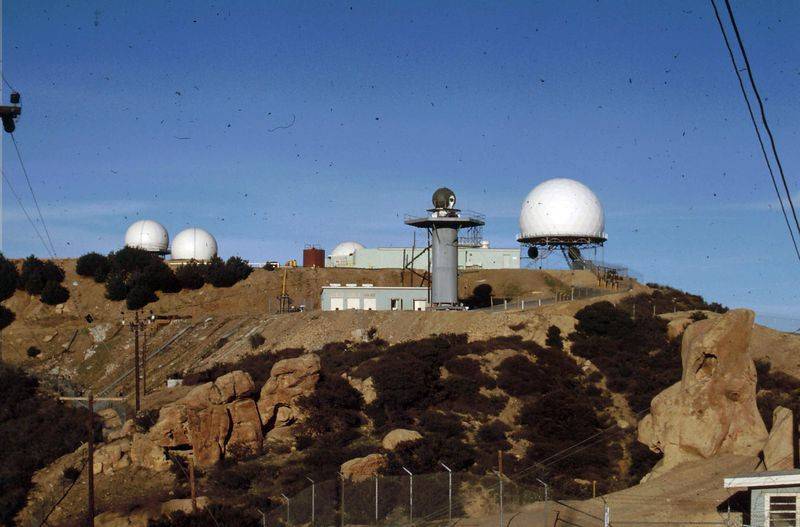
The detection and target designation system of the Nike-Hercules air defense system was originally based on a stationary detection radar from the Nike-Ajax air defense system operating in the continuous-wave radiation mode. The system had a means of identifying the nationality of air targets, as well as target designation.
In the stationary version, air defense systems were combined into batteries and divisions. The battery included all radar facilities and two launch pads, four launchers each. Each division included from three to six batteries. Anti-aircraft batteries were usually placed around the protected object at a distance of 50-60 km.
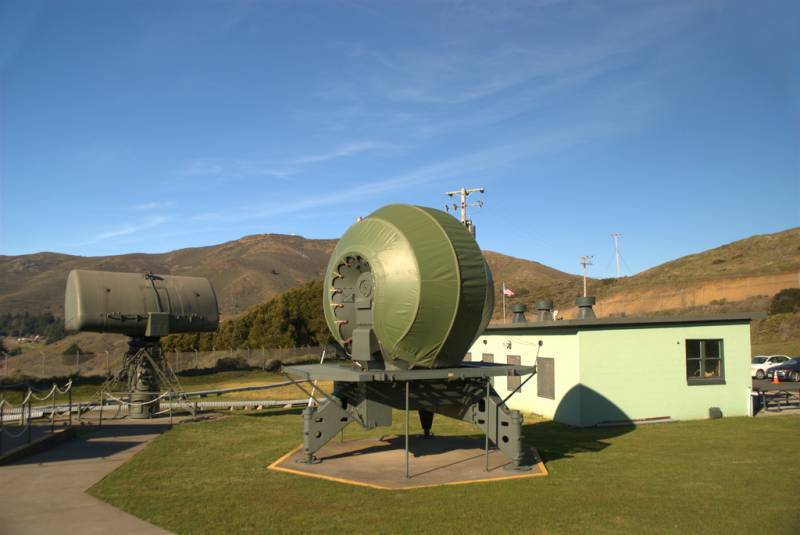
The purely stationary version of the placement of the Nike-Hercules complex soon ceased to suit the military soon after being adopted. In 1960, a modification of Improved Hercules appeared - "Advanced Hercules." The upgraded SAM Improved Hercules (MIM-14B) introduced new detection radars and improved tracking radars, which increased the noise immunity and the ability to track high-speed targets. An additional radio range finder continuously determined the distance to the target and issued additional corrections for the computer. Some of the electronic components were transferred from electrovacuum devices to a solid-state elemental base. Albeit with certain limitations, this option could already be deployed to a new position within a reasonable time. In general, the mobility of the MIM-14В / С Nike-Hercules was comparable to the mobility of the Soviet long-range complex S-200.
In the USA, the construction of the Nike-Hercules complexes continued until 1965; they were in service in 11 countries of Europe and Asia. In addition to the United States, licensed production of the MIM-14 Nike-Hercules was in Japan. In total, 393 ground-based anti-aircraft systems and about 25000 anti-aircraft missiles were launched.
The miniaturization of nuclear charges, achieved in the early 1960s, made it possible to equip an anti-aircraft missile with a nuclear warhead. Nuclear warheads were installed on the MIM-14 family of missiles: W7 - with a power of 2,5 kt and W31 with a power of 2, 20 and 40 kt. An air blast of the smallest nuclear warhead could destroy an aircraft within a radius of several hundred meters from the epicenter, which would effectively destroy even complex, small-sized targets like supersonic cruise missiles. About half of the Nike-Hercules anti-aircraft missiles deployed in the United States were equipped with nuclear warheads.
It was planned to use anti-aircraft missiles carrying nuclear warheads against group targets or in a complex jamming environment when precise targeting was impossible. In addition, missiles with nuclear warheads could potentially intercept single ballistic missiles. In 1960, the MGM-5 Corporal ballistic missile was successfully intercepted by a nuclear warhead anti-aircraft missile at the White Sands training ground in New Mexico.
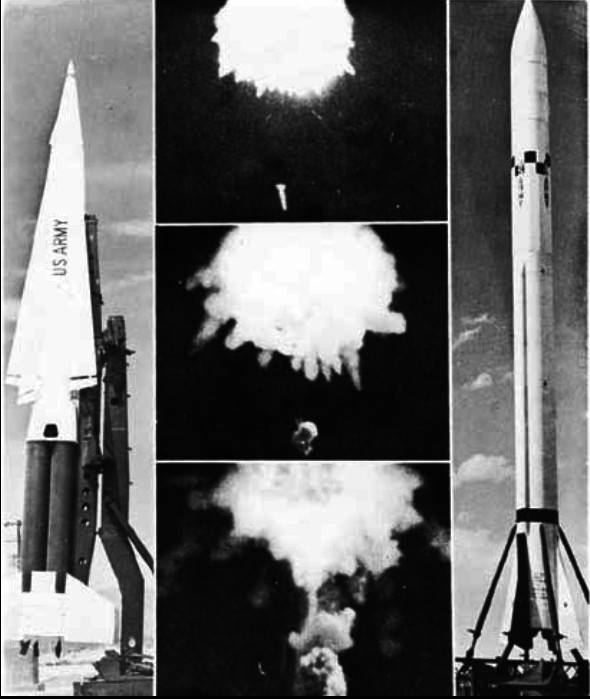
However, the anti-ballistic missile capabilities of the Nike-Hercules air defense missile systems were rated low. The probability of destruction of a single ICBM warhead did not exceed 0,1. This was due to the insufficiently high speed and range of the anti-aircraft missile flight and the inability of the guidance station to steadily accompany high-speed high-altitude targets. In addition, due to the low accuracy of guidance, only missiles equipped with nuclear warheads could be used to combat warheads of ICBMs. In a high-altitude air explosion due to ionization of the atmosphere, an area not visible by radars was formed, and guidance of other interceptor missiles became impossible. In addition to intercepting air targets, MIM-14 missiles equipped with nuclear warheads could be used to launch nuclear strikes against ground targets with coordinates known in advance.
In total, by the mid-1960s, 145 Nike Hercules batteries were deployed in the United States (35 were rebuilt and 110 were converted from Nike Ajax batteries). This made it possible to effectively cover the main industrial areas, administrative centers, ports, and air and naval bases from bombers. But by the end of the 1960s, it became clear that the main threat to objects in the United States was ICBMs, and not the relatively small Soviet long-range bombers. In this regard, the number of Nike-Hercules anti-aircraft batteries deployed in the United States began to decline. By 1974, all long-range air defense systems, with the exception of positions in Florida and Alaska, were removed from combat duty. The last position in Florida was liquidated in 1979. For the most part, stationary early-release complexes were disposed of, and mobile versions, after reconstructing repairs, were transferred to overseas American bases or transferred to the Allies.
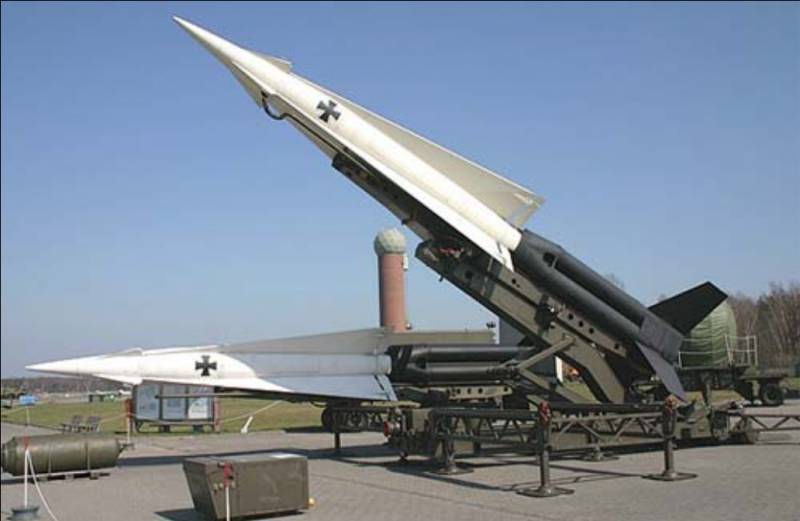
In Europe, the bulk of the MIM-14 Nike-Hercules systems were deactivated after the end of the Cold War and partially replaced by the MIM-104 Patriot air defense system. For the longest time, the Nike-Hercules air defense systems remained in service in Italy, Turkey and the Republic of Korea. The last launch of the Nike Hercules rocket took place in Italy at the Kapo San Larenzo training ground on November 24, 2006. Formally, several MIM-14 Nike-Hercules positions remain in Turkey until now. But the combat readiness of the air defense systems in the hardware of which a high proportion of electrovacuum devices raises doubts.
Incidents during the operation of the MIM-14 Nike-Hercules
During the operation of the Nike-Hercules complexes, several unintentional missile launches took place. The first such incident occurred on April 14, 1955 at a position in Fort George, Mead. It was there that at that moment was the headquarters of the US National Security Agency. No one was hurt during the incident. A second similar incident occurred at a position in the vicinity of Nakho Air Base in Okinawa, in July 1959. There is evidence that a nuclear warhead was installed on the rocket at that moment. The missile launched, being on the launcher in a horizontal position, killing two and seriously injuring one soldier. After breaking the fence, a rocket flew across the beach outside the base and fell into the sea off the coast.
The last such incident occurred on December 5, 1998 in the vicinity of Incheon in South Korea. Shortly after launch, the rocket exploded at a low altitude, above a residential area in the western part of the city of Incheon, injuring several people and knocking out glass in houses.
By 2009, all MIM-14 Nike-Hercules air defense systems in South Korea were removed from service and replaced by the MIM-104 Patriot air defense system. However, not all elements of the outdated complex immediately went into scrap. Until 43, powerful AN / MPQ-2015 radar surveillance radars were used to control the air situation in areas bordering the DPRK.
MIM-14 ballistic missiles
In the 1970s, in the United States, for the anti-aircraft missiles of the late MIM-14B / C series removed from combat duty, the possibility of conversion into operational-tactical missiles designed to destroy ground targets was considered. It was proposed to equip them with high-explosive, cluster, chemical and nuclear warheads. However, due to the high saturation of the American army with tactical nuclear weapons, this proposal did not meet with support from the generals.
However, taking into account the significant number of short-range ballistic missiles in North Korea, the South Korean army command decided not to dispose of the obsolete long-range missiles, but to convert them into operational-tactical missiles, called Hyunmoo-1 (translated as “keeper of the northern sky”). The first test launch at a distance of 180 km took place in 1986.
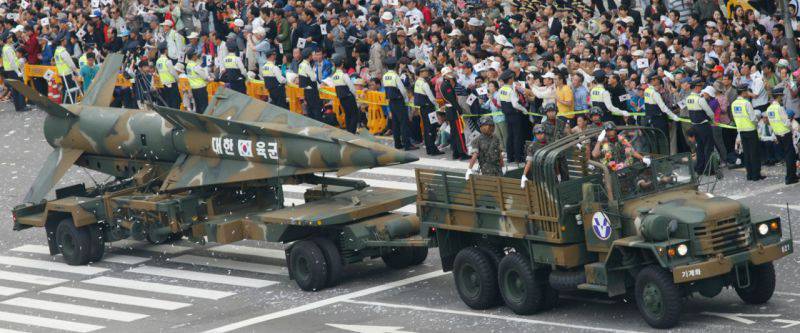
Alteration of decommissioned missiles in OTR began in the mid-1990s. An improved version of this ballistic missile with an inertial guidance system is capable of delivering a warhead weighing 500 kg to a range of about 200 km. For a long time Hyunmoo-1 was the only type of OTP, which is in service with the army of the Republic of Korea. In the upgraded version of Hyunmoo-2A, which entered the troops in 2009, the firing range was increased to 500 km. South Korean engineers managed to squeeze the maximum out of obsolete solid-fuel anti-aircraft missiles. According to available information, these missiles are equipped with a guidance system with satellite navigation. To launch ballistic missiles, both standard Nike-Hercules air defense launchers and specially designed towed launchers can be used.
Missile defense system Nike Zeus
Back in 1945, being impressed by the use of German A-4 (V-2) ballistic missiles, the US Air Force command initiated the Wizard program, which aimed to study the possibility of intercepting ballistic missiles. By 1955, experts came to the conclusion that intercepting a ballistic missile is, in principle, a solvable task. To do this, it was necessary to timely detect an approaching projectile and launch an interceptor missile with an atomic warhead, the detonation of which would destroy an enemy missile. Given the fact that just at that time the creation of the MIM-14 Nike-Hercules anti-aircraft system was underway, it was decided to combine these two programs.
The Nike-Zeus A missile defense, also known as the Nike-II, has been in development since 1956. The three-stage rocket of the Nike-Zeus complex was a modified and modified Nike-Hercules missile launcher, in which the acceleration characteristics were improved due to the use of an additional stage. A missile with a length of about 14,7 meters and a diameter of about 0,91 meters in running order weighed 10,3 tons. The destruction of intercontinental ballistic missiles was supposed to be carried out by a nuclear warhead W50 with a capacity of 400 kt with an increased neutron yield. The compact thermonuclear warhead, weighing about 190 kg, undermined the destruction of the enemy ICBMs at a distance of up to two kilometers. When an enemy warhead is exposed to a dense neutron flux, the neutrons would provoke a spontaneous chain reaction inside the fissile material of an atomic charge (the so-called “pop”), which would lead to a loss of ability to carry out a nuclear explosion.
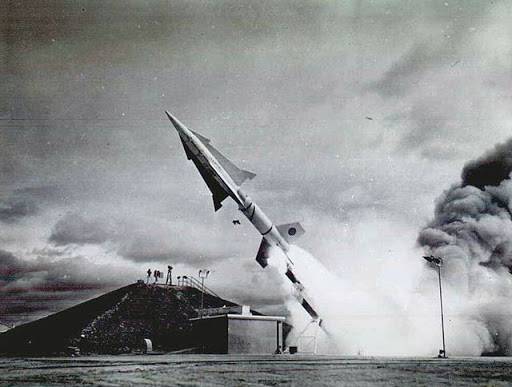
The first modification of the Nike-Zeus A missile defense, also known as Nike-II, first launched in a two-stage configuration in August 1959. Initially, the rocket had developed aerodynamic surfaces and was designed for atmospheric interception.
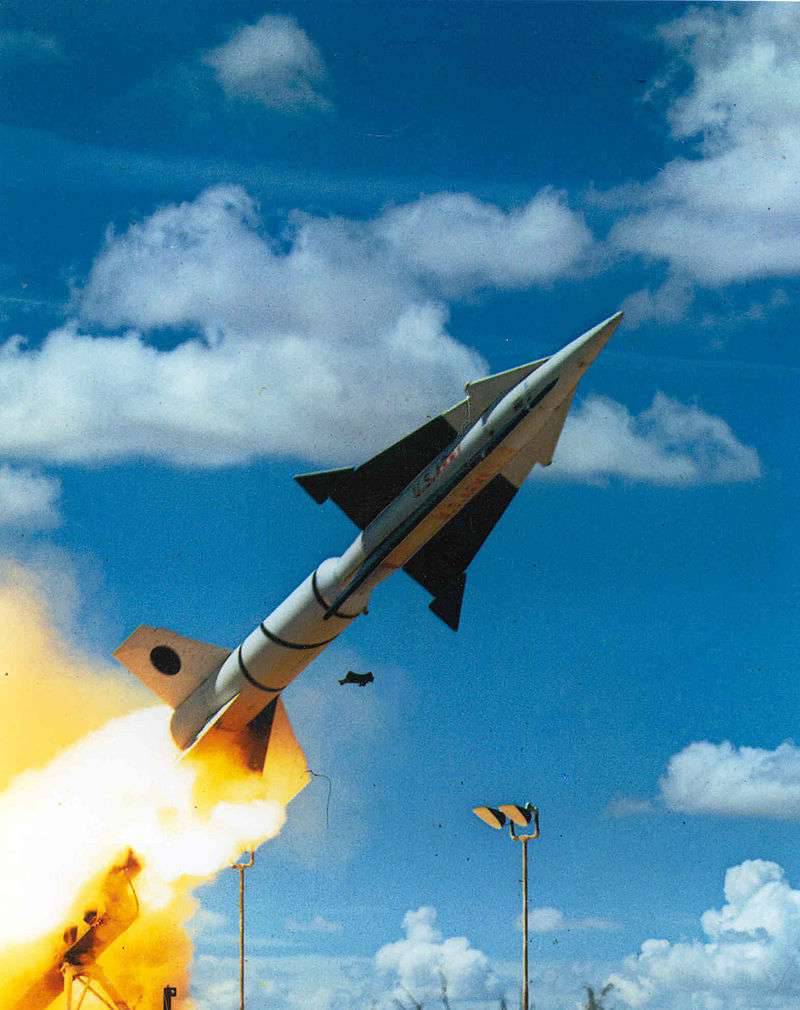
The successful launch of a rocket equipped with a guidance and control system took place on February 3, 1960. Given the fact that the military demanded a ceiling of up to 160 kilometers, all launches under the Nike-Zeus A program were carried out only as experimental experiments, and the obtained data were used to test a more advanced interceptor. After a series of launches, changes were made to the rocket's design to ensure greater flight speed and range.
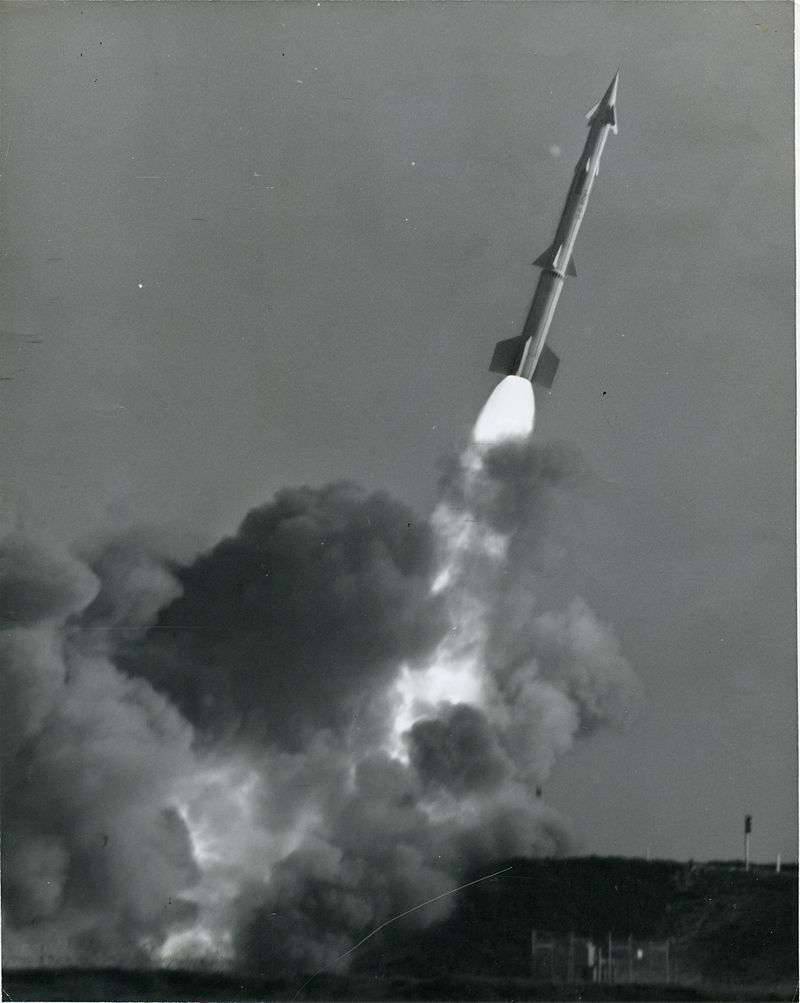
In May 1961, the first successful launch of the three-stage version of the rocket, the Nike-Zeus B, took place. Six months later, in December 1961, the first training interception took place, during which the inert warhead missile passed 30 meters from the Nike-Hercules missiles acting as a goal. If the anti-missile warhead was combat, the conditional target would be guaranteed to be hit.
The first test launches for the Zeus program were conducted from the White Sands training ground in New Mexico. However, landfills located in the continental United States were not suitable for testing missile defense systems. Intercontinental ballistic missiles, launched as training targets, did not manage to gain sufficient height due to close starting positions, because of this it was impossible to simulate the trajectory of a warhead entering the atmosphere. When launched from another point of the globe, in the event of a successful interception, there was a risk of debris falling into densely populated areas. As a result, the remote Pacific atoll Kwajalein was chosen as the new missile firing range. In this area, it was possible to accurately simulate the situation of interception of warheads of ICBMs entering the atmosphere. In addition, Kwajalein already partially had the necessary infrastructure: port facilities, a major runway and radars.
Especially for testing the Nike-Zeus missile defense system, a stationary ZAR radar (Zeus Acquisition Radar - Zeus detection radar) was built on the atoll. This station was designed to detect approaching warheads and provide primary target designation. The radar had a very high energy potential. High-frequency radiation posed a danger to people at a distance of more than 100 meters from the transmitting antenna. In this regard, and in order to block interference arising as a result of signal reflection from ground objects, the transmitter was isolated along the perimeter with a double inclined metal fence.
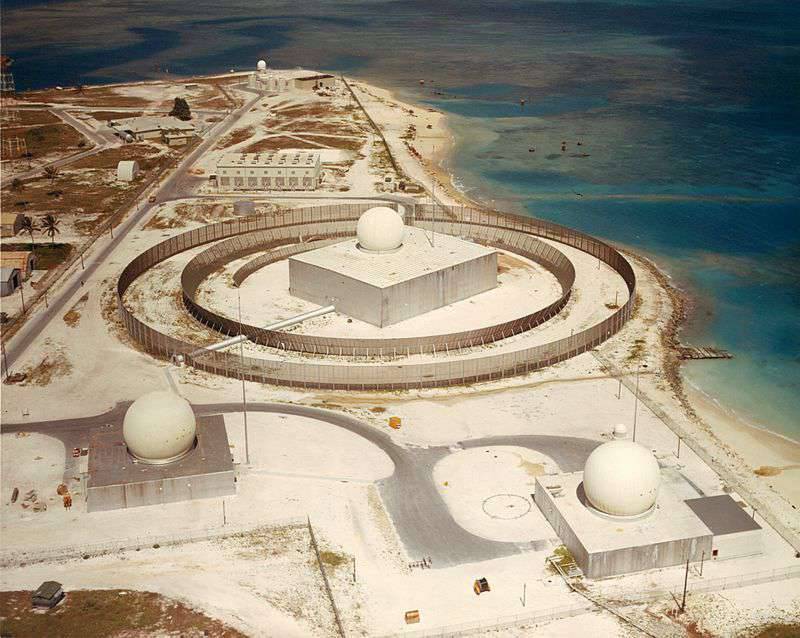
Target selection in the upper atmosphere was carried out by ZDR radar (English Zeus Discrimination Radar - Zeus radar of the selection). By analyzing the difference in the braking speed of the accompanied warheads in the upper atmosphere, the real warheads were separated from lighter false targets, whose braking was faster. Real ICBM combat units were taken to support one of the two TTR radars (Eng. Target Tracking Radar - target tracking radar). Real-time data from the TTR radar on the target position was transmitted to the central missile defense center computing center. After the missile was launched at the estimated time, it was taken to escort the MTR radar (MIssile Tracking Radar - missile escort radar), and the computer, comparing the data from the escort stations, automatically sent the antimissile to the calculated interception point. At the time of the closest rapprochement of the missile defense, a command was received to undermine the nuclear warhead. The missile defense system was capable of simultaneously attacking up to six targets, two interceptor missiles could be aimed at each attacked warhead. However, when the enemy used false targets, the number of targets that could be destroyed in a minute was significantly reduced. This was due to the fact that the ZDR radar needed to “filter out” the false targets.
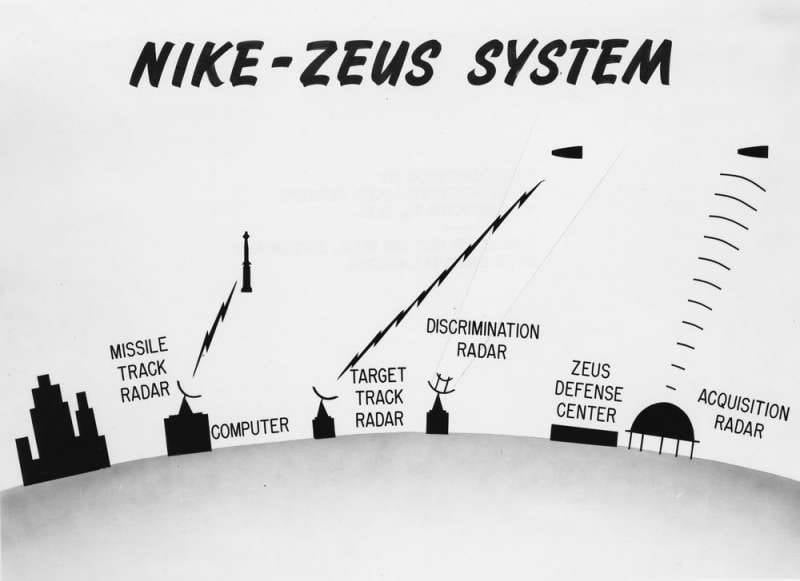
The Nike-Zeus missile defense system, which covered a specific area, should have included two MTR radars and one TTR, as well as 16 missiles ready to launch. Information about the missile attack and the selection of false targets was transmitted to the starting positions from the ZAR and ZDR radars. One TTR radar was working for each specific attacking warhead, and thus the number of escorted and fired targets was seriously limited, which reduced the ability to repulse a missile attack. From the moment the target was discovered and the development of the fire solution took approximately 45 seconds, and the system was physically unable to intercept more than six attacking warheads simultaneously. Given the rapid increase in the number of Soviet ICBMs, it was predicted that the USSR would be able to break through the missile defense system by launching more warheads simultaneously at the guarded object, thereby oversaturating the capabilities of tracking radars.
After analyzing the results of 12 test launches of the Nike-Zeus anti-ballistic missiles from the Kwajalein Atoll, specialists from the US Department of Defense came to the disappointing conclusion that the anti-ballistic missile system was not very high in combat effectiveness. There were frequent technical failures, and the noise immunity of the radar detection and tracking left much to be desired. With the help of Nike-Zeus, it was possible to cover a limited area from ICBM strikes, and the complex itself required very serious investments. In addition, the Americans seriously feared that adopting an imperfect missile defense system would push the USSR to build up the quantitative and qualitative potential of nuclear weapons and launch a preventive strike in the event of an aggravation of the international situation. In early 1963, despite some success, the Nike-Zeus program was closed. Subsequently, the obtained results were used to create a completely new Sentinel missile defense system with the LIM-49A Spartan anti-ballistic missile system (development of the Nike series), which was to become part of the airborne interception system.
An anti-satellite complex was created on the basis of the missile defense test complex at Kwajalein Atoll as part of the Mudflap project, using modified Nike-Zeus B. -24 Agena. The combat duty of the anti-satellite complex lasted from 1963 to 81.

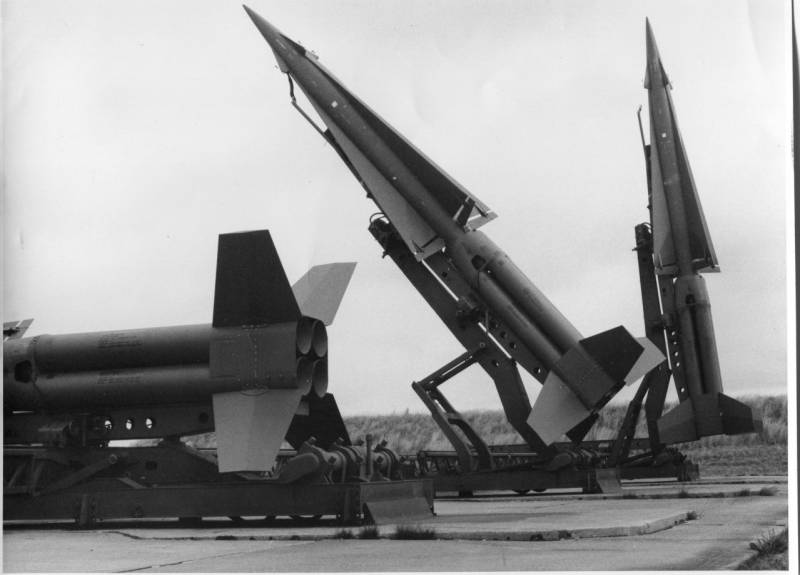
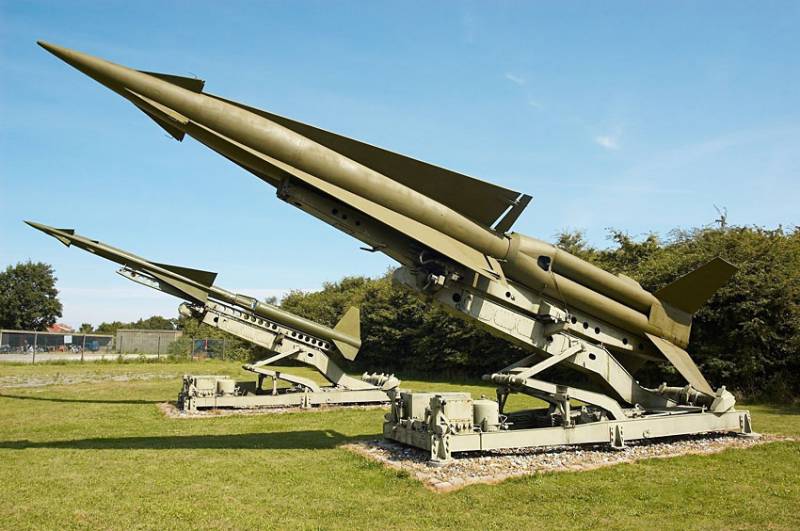
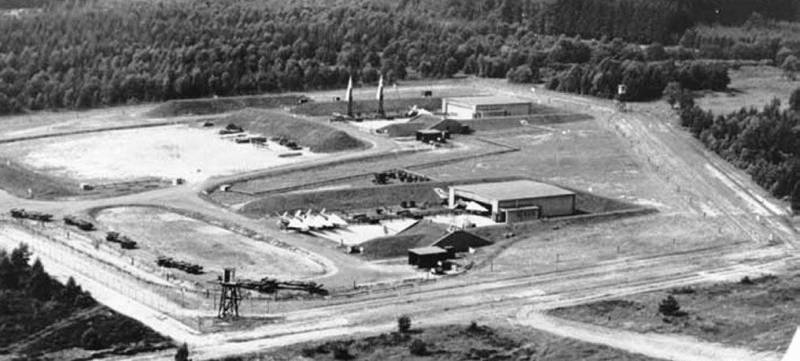
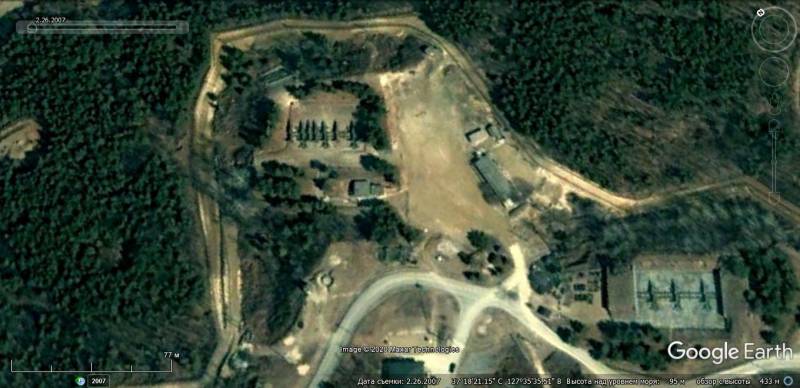
Information